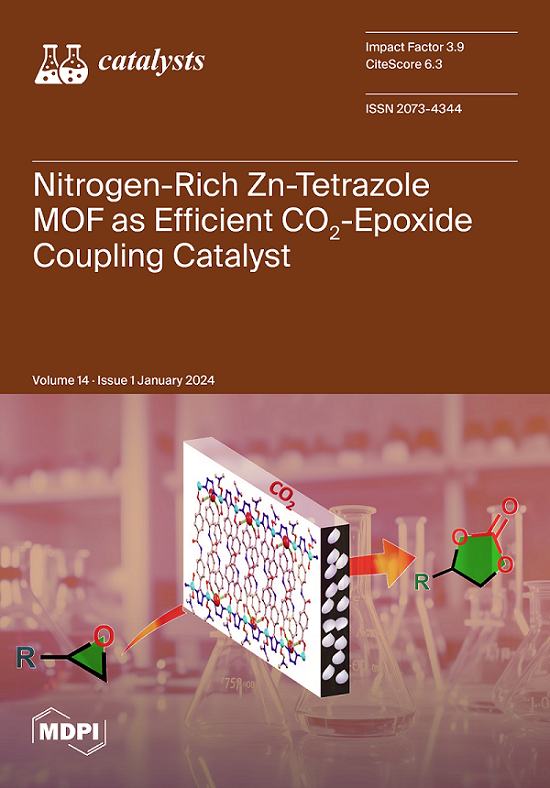Photodegradation of Wastewater Containing Organic Dyes Using Modified G-C3N4-Doped ZrO2 Nanostructures: Towards Safe Water for Human Beings
IF 3.8
3区 化学
Q2 CHEMISTRY, PHYSICAL
引用次数: 0
Abstract
Historically, the photocatalytic efficacy of graphitic carbon nitride (g-C3N4) has been constrained by a rapid charge recombination rate and restricted sensitivity to visible light. To overcome these limitations and enhance the performance of g-C3N4, the strategic formation of heterojunctions with semiconductor materials is deemed the optimal approach. The present study employed a facile sonication-assisted pyrolysis method to synthesize a g-C3N4@ZrO2 nanocomposite photocatalyst. This hybrid material was characterized extensively using a comprehensive suite of analytical techniques, including XRD, SEM, EDX, FTIR, and UV-Vis DRS. A comparative analysis of photocatalytic applications under identical conditions was conducted for all synthesized materials, wherein they were subjected to UVc light irradiation. The photocatalytic degradation of various dye models, such as MB, EY, and a combination of dyes, was assessed using the prepared nanocomposites. The g-C3N4@ZrO2 photocatalysts showcased superior photocatalytic performance, with a particular variant, g-CNZ6, exhibiting remarkable activity. With a bandgap energy of 2.57 eV, g-CNZ6 achieved impressive degradation efficiencies of 96.5% for MB and 95.6% for EY within 40 min. Following previous studies, the superoxide radical anions (O2−. and h+) were largely accountable for the degradation of MB. Therefore, the observed efficacy of the g-C3N4@ZrO2 nanocomposite photocatalyst can be attributed to the increased generation of these reactive species.利用改性 G-C3N4 掺杂 ZrO2 纳米结构光降解含有机染料的废水:实现人类安全用水
一直以来,氮化石墨碳(g-C3N4)的光催化功效都受到电荷快速重组率和对可见光敏感性的限制。为了克服这些限制并提高 g-C3N4 的性能,战略性地与半导体材料形成异质结被认为是最佳方法。本研究采用简便的超声辅助热解方法合成了 g-C3N4@ZrO2 纳米复合光催化剂。研究人员利用 XRD、SEM、EDX、FTIR 和 UV-Vis DRS 等一整套分析技术对这种混合材料进行了广泛表征。在相同条件下,对所有合成材料的光催化应用进行了比较分析,即对它们进行紫外 c 光照射。利用所制备的纳米复合材料评估了各种染料模型(如 MB、EY 和染料组合)的光催化降解情况。g-C3N4@ZrO2 光催化剂表现出卓越的光催化性能,其中一种特殊的变体 g-CNZ6 表现出显著的活性。g-CNZ6 的带隙能为 2.57 eV,在 40 分钟内对 MB 和 EY 的降解效率分别达到 96.5% 和 95.6%。根据以往的研究,超氧自由基阴离子(O2-和 h+)在很大程度上导致了甲基溴的降解。因此,所观察到的 g-C3N4@ZrO2 纳米复合光催化剂的功效可归因于这些活性物种生成的增加。
本文章由计算机程序翻译,如有差异,请以英文原文为准。
求助全文
约1分钟内获得全文
求助全文
来源期刊

Catalysts
CHEMISTRY, PHYSICAL-
CiteScore
6.80
自引率
7.70%
发文量
1330
审稿时长
3 months
期刊介绍:
Catalysts (ISSN 2073-4344) is an international open access journal of catalysts and catalyzed reactions. Catalysts publishes reviews, regular research papers (articles) and short communications. Our aim is to encourage scientists to publish their experimental and theoretical results in as much detail as possible. Therefore, there is no restriction on the length of the papers. The full experimental details must be provided so that the results can be reproduced.
 求助内容:
求助内容: 应助结果提醒方式:
应助结果提醒方式:


